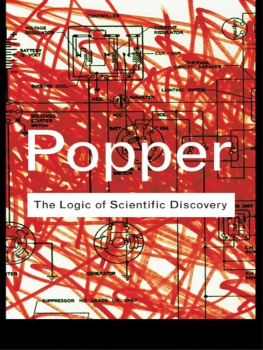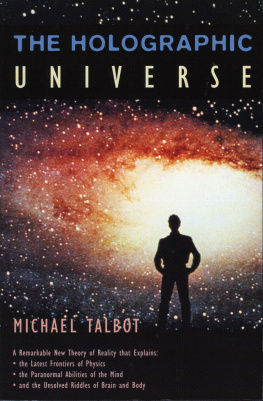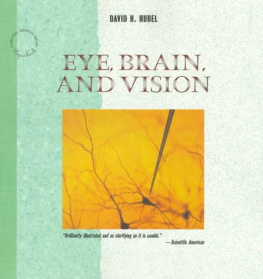All rights reserved.
Printed in the United States of America
First Edition
No portion of this book may be reproduced in any fashion, print, facsimile, or electronic, or by any method yet to be developed, without the express written permission of the publisher.
For information about permission to reproduce selections from this book, write to:
The Washington Academy of Sciences was incorporated in 1898 as an affiliation of the eight Washington D.C. area scientific societies. The founders included Alexander Graham Bell and Samuel Langley, Secretary of the Smithsonian Institution. The number of Affiliated Societies has now grown to over sixty. The purpose of the Academy has remained the same over the years: to encourage the advancement of science and to conduct, endow, or assist investigation in any department of science.
The Academy offers distinguished scientists the opportunity to submit a book to our editors for review of the science therein. The manuscript receives the same rigorous scientific review accorded articles to be published in our Journal. If the reviewer(s) determine(s) that the science is accurate the book may use the approved seal of the Academy to demonstrate that it has met the required criteria.
The Academy is particularly proud to award the seal to Dr. Karl Pribram who, in 2010, received the Academys award for his Distinguished Career in Science.
The Quest
When Clerk-Maxwell was a child it is written that he had a mania for having everything explained to him, and that when people put him off with vague verbal accounts of any phenomenon he would interrupt them impatiently by saying, Yes; but I want to know the particular go of it! Had the question been about truth, only a pragmatist could have told him the particular go of it.... Truths emerge from facts; but they dip forward into facts again and add to them; which facts again create or reveal new truth.... And so on indefinitely. The facts themselves are not true. They simply are. Truth is the function of beliefs that start and terminate among them.
William James, Pragmatism: A New Name for Some Old Ways of Thinking, 1931
Have you noticed the massive interest shown by the scientific community in studies of mind and brain? Scientific American is publishing a new journal, Mind ; Psychology Today is headlining studies of the workings of the brain; Popular Science and Discover are filled with tales of new discoveries that relate mind to brain and 37,000 neuroscientists are working diligently to make these discoveries possible.
It has not always been this way. When, as an undergraduate at the University of Chicago in the 1930s, I took a course on the nervous system, we stopped short of the brain cortexand what we now know as the limbic systems was dismissed as a most mysterious territory called the olfactory brain.
It was this very lack of knowledge that attracted me: The Form Within is the story of my adventures in charting this most important world about which we then knew so little. In the process, the data I gathered and the colleagues with whom I worked changed what opinions I had brought to the research and added sophistication to my interpretations. In retrospect what impresses meand what I urge my students to appreciateis the long time required, sometimes decades of passion, persistence and patience, for an idea to ripen into a body of hard evidence and a theoretical formulation that I was finally able to communicate clearly to others.
The Form Within tells the story of my voyage of discovery during almost a century of research and theory construction. The story is set within the frame of the discoveries of the previous century, the 19th, which totally revised our understanding in the Western world of how our brains work. During the 17th century and earlier, the human brain was thought to process air, often termed spirits. With the advent of the sciences of chemistry and of electricity, a basic understanding of brain processes was attained that, to a large extent, resembles our current views. Writings like those of William James and Sigmund Freud, around the juncture of the two centuries, will be referenced repeatedly in the following chapters.
My own story has a somewhat different perspective from that which is currently available in most neuro- and psychological science books and journals. For example, my interactions with the 20th century shapers of viewpoints in the brain and behavioral sciencesB.F. Skinner and Karl Lashley, experimental psychologists; Wilder Penfield, neurosurgeon; Arthur Koestler, author; John Eccles, neurophysiologist and Karl Popper, philosopherexpose the questions that puzzled us rather than the dogma that has become associated with their names.
Thus, The Form Within is the story of my quest. It charts a voyage of discovery through 70 years of breakthroughs in brain and psychological research. More than a hundred students have obtained their doctoral and postdoctoral training in my laboratory and gone on to productive and in some cases outstanding careers. Collaboration with scientists on five continents has formed and continues to form my views. The voyage is not over: each month Ive had to add to, and in some cases revise, this manuscript. But as a work in progress, The Form Within is to me an inspiring chronicle of a most exciting voyage through what, often, at the time, has seemed to be a storm of experimental and theoretical findings. As you will see, the concept of form the form within as formative causationprovides a novel and safe vessel for this journey.
The Form Within
The first thing we have to say respecting what are called new views... is that they are not new, but the very oldest of thoughts cast into the mold of these new times.
Ralph Waldo Emerson, The Transcendentalist, 1842
A major thrust in our current changing view of humanity has been our growing understanding of what our brain does and how it does it. As always, in times of change, controversies have arisen. Not surprisingly, some of the most exciting findings, and the theories that are derived from them, are being swept under the rug. In The Form Within I have enjoyed placing these controversies within the larger context of complexity theory, framed by two ways of doing science from the time of classical Greece to the present. Within such a frame I bring to light findings that deserve our attention which are being ignored, and I clarify the reasons why they are being ignored.
Critical to any communication of our brains complex inner activity and its interaction with the world we navigate is the concept of form: The Form Within . We are in the midst of an in-form-ation revolution, begun in the latter half of the 20th century, that is superseding the Industrial Revolution of the 19th and early 20th centuries. The Industrial Revolution had created a vast upheaval through the impact of changes that occurred in our material world. The information revolution that is now under way is changing the very form , the patterns of how we navigate that world.
This revolution has many of the earmarks of the Copernican revolution of earlier times. That revolution inaugurated a series of scientific breakthroughs such as those by Galileo, Newton, Darwin and Freud. Though often unintended, all of these and related contributions shifted humans from center stage to ever more peripheral players in the scientific scenario.









